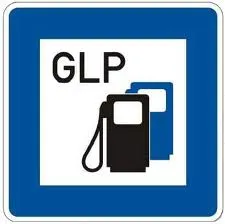This time I'm going to tell you about the alternative fuel most used in the World, but unknown to the vast majority of you. The LPG in English is a mixture of butane and propane that is stored at a pressure of 10 bars, that is, liquid state. It is a fuel of fossil origin available in huge quantities on the planet. It can also be called GLV, liquefied gas vehicle. The LPG is used in internal combustion engines by spark ignition, come on, what is being Otto cycle engine, or vulgarly "gasoline". LPG has a series of environmental and economic advantages that make it especially interesting, although it still has certain drawbacks that prevent its use on a massive scale. Environmentally speaking, it is much more respectful. Emissions are more innocuous in almost all aspects to gasoline or diesel vehicles, without resorting to expensive hybrid or electric solutions. On the other hand, it is very easy to obtain, since the oil refining process generates LPG and it is also possible to obtain it from natural gas deposits.
Petroleum liquid gas
It is the mixture of petroleum hydrocarbons which are gaseous at ambient temperature and pressure. The word liquids comes from the fact that even though the components of LPG are gases, they are easy to liquefy. LPG is derived primarily from natural gas or petroleum refining gases.
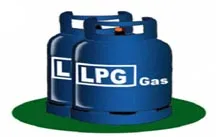
Origin of the LPG
The LPG has been formed underground for millions of years. Gas wells produce a mixture of gases that are then separated into methane (natural gas), liquefied petroleum gases (propane and butane) and other gases. The LPG is also produced in refineries from crude oil. The LPG is in the gaseous state at normal atmospheric pressure, whereas it only appears in the liquid state at very low temperatures or after a compression process. By releasing the pressure (for example, when opening the gas supply valve) the liquid boils and forms a vapor. It is this steam (gas) that is used to supply power to equipment and appliances. Heat is needed to convert liquid into gas, a process called latent heat of evaporation. By boiling the liquid, it absorbs its own caloric energy and that of the surrounding medium. That is why the containers are cold to the touch and when the use of gas is very intensive, ice may appear on the surface. The pressure increases with temperature. Therefore, if the temperature increases in the place where the tank is, the pressure inside the tank will also increase as the liquid expands. Normally the tanks have a built-in pressure-releasing valve, to let escape the excessive pressure generated by total safety.
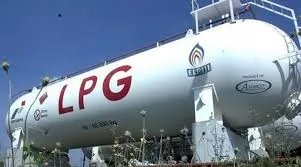
Properties of the LPG
LPG vapor is heavier than air, so the losses will accumulate in the lower areas or at ground level and it may be difficult to disperse it. Therefore, the LPG must never be stored or used in cellars or cellars. Like most gases, the LPG is odorless, so a strong odorizing agent with a foul odor is added so that it can be detected more easily in case of any loss.
The LPG is flammable in the presence of oxygen and, although it is not toxic, inhaling large amounts could cause suffocation. The LPG is a high-performance fuel, but will only come on if the air mixture is in a ratio (gas: air) of 1: 50 to 1:10. The low flammability limit implies that even small losses can have serious consequences.
The ignition temperature of the LPG with air is approximately 500 ° C, lower than that of most gases but, in fact, it requires more energy to ignite. Therefore, some gas lighters may not work with LPG. The calorific value of the LPG is approximately 2.5 times higher than that of most gases, consequently producing more heat with the same volume of gas. The LPG reacts chemically and could cause the deterioration of some plastics and rubber. Only equipment and clothing specifically designed for the use of LPG should be used.
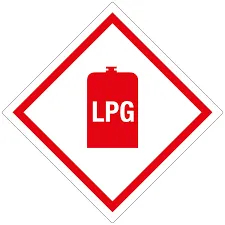
Propane and Butane
There are two types of LPG, Propane and Butane. It has similar properties, but different applications. They are not interchangeable since they have different operating pressure and different combustion conditions. The valves and packages are also different to avoid confusions or accidental uses of the wrong type of LPG. Propane has a lower boiling point than butane, therefore it will vaporize at cooler temperatures, below -45 ° C. When it is stored in a tank in a liquid state, it has a higher pressure than butane at the same temperature. Consequently, propane is more appropriate for storage and outdoor use. Its ability to operate in low temperatures makes it the most suitable LPG for many applications. Propane is much more used as a source of fuel to heat rooms, heat water and cook. In addition, it has a wide variety of applications in industry and agriculture. Butane has lower vapor pressure at equivalent temperatures and is suitable for indoor use or also, during summer, outdoors. Butane is the most used fuel for transportable small containers, both at home and in outdoor recreational activities. Butane is normally stored in metal containers, like Propane, which is also stored in bulk tanks.
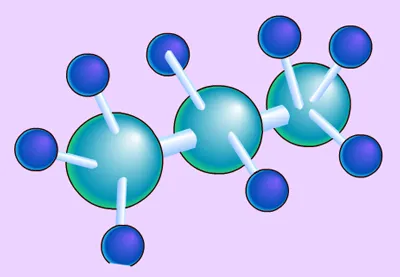
Characteristics of liquefied petroleum gas:
- It has no color, in a liquid state it is transparent as if it were water.
- It has no smell, although when it is produced a substance is added to detect it when there is a leak.
- It is not toxic only displaces oxygen so it is not convenient to breathe it long.
- It is clean, when properly burned combined with air, it does not form soot or produce bad taste in foods prepared with it
- It is economical, because of its performance compared to other fuels.
- It is heavier than air so if it escapes it tends to go to low areas.
- It is very flammable.
Uses of liquefied petroleum gas
LPG supplied in cylinders or delivered in large bulk tanks, finds a market in the domestic, commercial and industrial sectors. In domestic and commercial markets, LPG offers a clean fuel for cooking, heating, and cars. It is an automotive fuel especially attractive because it substantially reduces the exhaust emissions of vehicles. In the industrial market, LPG is suitable for many uses where high-quality fuel is required. The high costs of storage and handling normally limit LPG to those applications where a high price can be obtained.
Significant quantities of LPG are also used in refineries and oil industries. In the refinery, butane is used mainly in the production of gasoline; n-butane is added to increase the volatility and octane number of the fuel, while isobutane and butene are consumed by the alkylation process to provide high-octane alkylates for the gasoline mixture. An important use of LPG as a chemical raw material is in the manufacture of intermediates for polymers such as polyethylene, polyvinyl chloride, and polypropylene, to name a few.
In the piped gas industry, LPG can be used in various ways. Propane can be injected near the consumer when the pipeline is overloaded or, less frequently, previously in the transmission system when there is a shortage of gas. Due to the effect on the calorific value and combustion characteristics of the gases, the quantities of propane that can be used are limited. Alternatively, an air-propane mixture can be introduced in larger quantities, and this method for increasing gas supplies during periods of maximum demand has been employed for many years. Butane is not as attractive for this service because of its higher boiling point.
